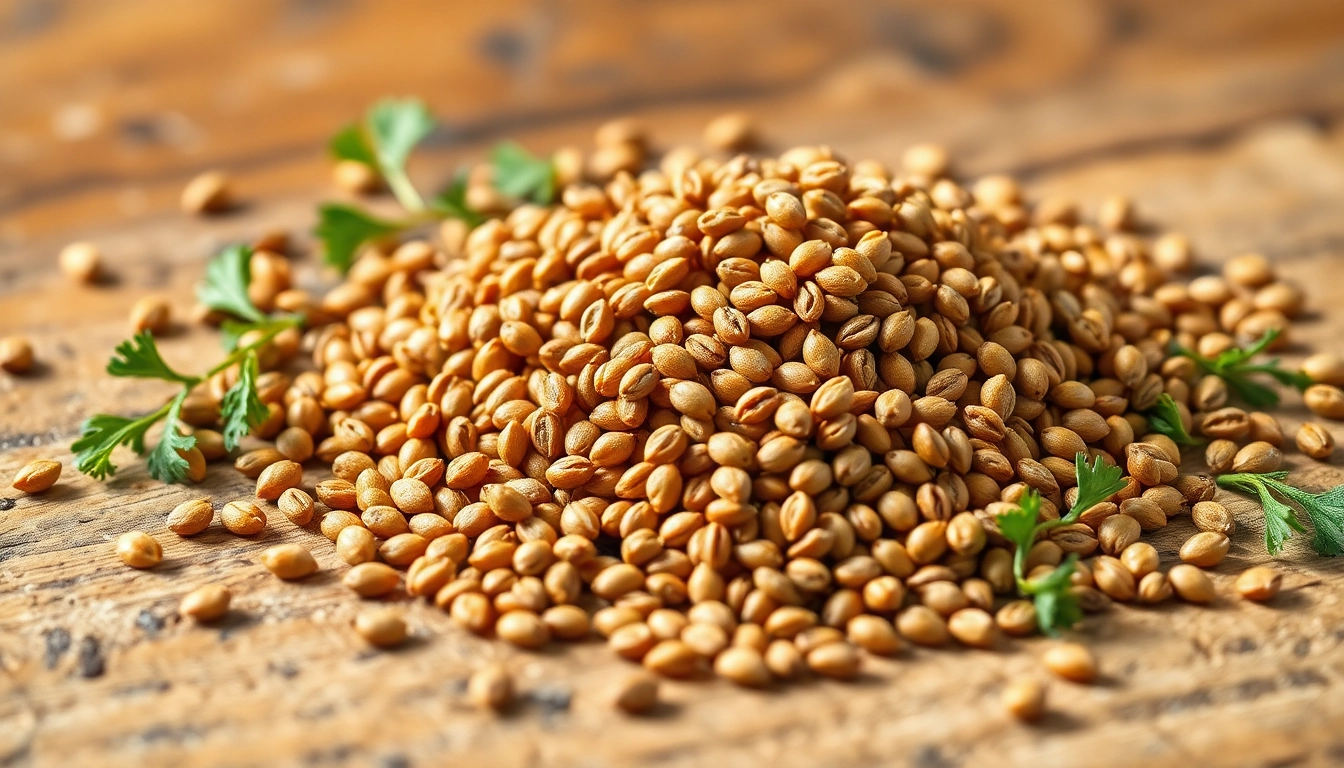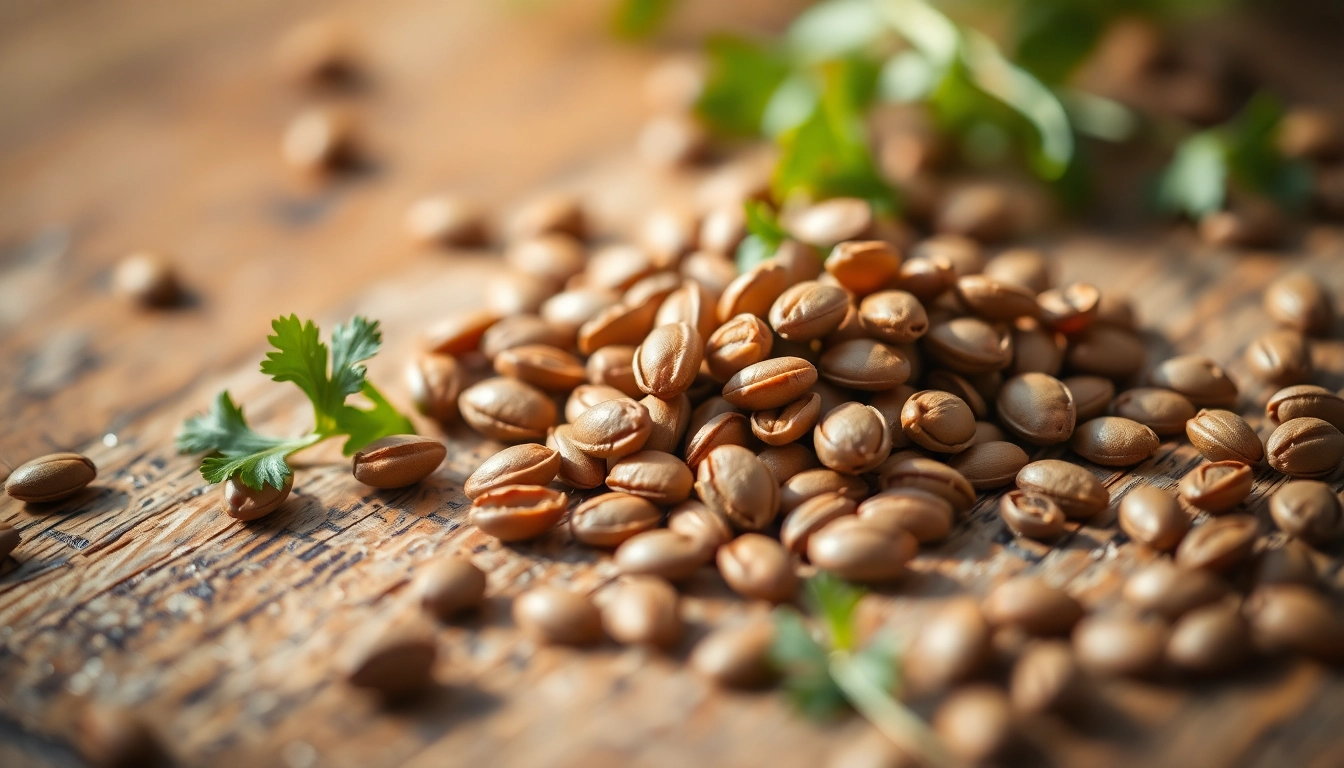Understanding Coriander Seeds: Varieties and Characteristics
Coriander seeds are among the most versatile and globally appreciated spices, integral to both traditional and modern cuisine. Known scientifically as Coriandrum sativum, these seeds are harvested from the coriander plant, which is cultivated extensively across various regions. Their unique flavor profile—combining citrusy, nutty, and slightly sweet notes—makes them indispensable in spice blends, savory dishes, and pickles. The diversity of coriander seed varieties available in the market stems from regional cultivation practices, climatic conditions, and processing methods, each influencing the final product’s aroma, flavor, and appearance.
As a leading Coriander Seeds manufacturer and exporter, Spice Nest ensures that each batch adheres to stringent quality standards, capturing the authentic aroma and flavor that define premium coriander seeds globally. Understanding these variations and characteristics is vital for buyers—whether retailers, chefs, or food manufacturers—aiming to select the best quality coriander seeds for their needs.
Different Types of Coriander Seeds and Their Prices
The market features several types of coriander seeds, primarily classified based on regional origin, size, and processing method. These include Indian coriander seeds, Moroccan, Egyptian, and Russian varieties, each with distinct flavor nuances.
- Indian Coriander Seeds: Known for their bold aroma and robust flavor, Indian coriander seeds are preferred for their high oil content and authentic taste. They are generally medium to large in size with a light brown color.
- Moroccan Coriander Seeds: Slightly smaller and lighter in flavor, Moroccan seeds are often used in spice blends for North African cuisine.
- Egyptian Coriander Seeds: These seeds tend to be larger and have a milder flavor profile, suitable for baking and processed foods.
- Russian Coriander Seeds: Characterized by a more pungent aroma, often used in spice blends requiring strong flavoring.
Prices vary depending on quality, quantity, packaging, and the regional source. On average, wholesale prices for high-quality coriander seeds ranges from $4 to $8 per kilogram, with premium organic or specialty varieties commanding higher rates. As a top manufacturer, Spice Nest provides consistent quality at competitive prices, ensuring your products meet culinary and commercial standards.
Physical and Flavor Profile of High-Quality Coriander Seeds
High-quality coriander seeds are characterized by their uniform size, intact shape, and fresh aroma. They typically display a light to medium brown color with a smooth surface and minimal breakage. The physical integrity of the seeds signifies good harvesting and processing practices, which directly impact flavor preservation.
Flavor-wise, premium coriander seeds possess a complex, citrusy aroma with hints of earthiness and nuttiness. The best seeds have a high oil content, which contributes to a more intense and long-lasting flavor. In sensory evaluations, high-grade seeds showcase a balanced spice profile that imparts a warm, sweet, and slightly peppery note to culinary preparations.
For industrial applications, such as spice blends, ensuring the physical and flavor integrity of coriander seeds is crucial. Continuous quality checks, including moisture testing, foreign matter inspection, and aroma profiling, are standard practices among leading manufacturers like Spice Nest to maintain top standards.
Regional Variations and Their Impact on Taste
The geographic origin of coriander seeds profoundly influences their flavor, aroma, and overall quality. Regional climatic conditions, soil type, and cultivation methods shape these differences, making regional terroirs a key consideration for buyers and chefs.
Indian Coriander Seeds
Originating mostly from Rajasthan, Gujarat, and Madhya Pradesh, Indian coriander seeds are renowned for their intense aroma and full-bodied flavor. They are often preferred in Indian, Middle Eastern, and Asian cuisines for their potent profile.
Moroccan and Egyptian Coriander
Moroccan seeds tend to be smaller with a milder flavor, making them suitable for spice blends that require subtlety. Egyptian seeds, characterized by their size, offer a more subdued yet balanced flavor, ideal for baking and processed foods.
European and Russian Coriander
These regions produce coriander with a pungent aroma and a sharper taste, often used to enhance flavor profiles where a pronounced spice note is desired.
Understanding these regional nuances helps buyers select coriander seeds that best match their culinary intent or processing requirements, ensuring optimal flavor and aroma in the final product.
Buying and Sourcing Coriander Seeds: Tips for Retailers and Wholesalers
Where to Find Trusted Coriander Seed Suppliers
Reliable sourcing starts with identifying manufacturers and exporters known for quality and consistency. Leading companies like Spice Nest offer certified coriander seeds, validated through global standards such as ISO, HACCP, and Organic Certifications. Attending major food exhibitions, such as Biofach or India Food & Hospitality Expo, provides opportunities to meet reputable suppliers directly.
Trade platforms, industry directories, and direct factory visits are effective ways to verify supplier credibility. Building long-term relationships with trusted suppliers reduces supply chain risks and ensures steady access to premium coriander seeds.
Evaluating Freshness and Authenticity
Fresh coriander seeds retain their aromatic integrity and oil content. Assess freshness through visual cues—uniform size, intact shape, and clean surface—along with aroma tests, which should reveal a strong citrusy scent. Authenticity can be verified via certification documents and traceability reports from the supplier.
Certifications and Quality Standards to Look For
International quality standards such as ISO 22000, HACCP, and Organic certifications ensure supplier adherence to hygiene, safety, and quality norms. Buyers should request lab reports on moisture content, aflatoxin levels, and microbiological safety. These measures protect the consumer and enhance export potential.
Processing and Storage of Coriander Seeds for Maximum Freshness
Optimal Cleaning, Roasting, and Packaging Techniques
Proper processing begins with thorough cleaning to remove dirt, stones, and foreign matter. Advanced optical sorting and pneumatic cleaning systems ensure high purity. Light roasting can enhance aroma, but over-roasting risks flavor loss. Packaging should be airtight, moisture-resistant, and tamper-evident to preserve freshness and aroma.
Best Practices for Long-Term Storage
Store coriander seeds in cool, dry, and dark environments with low humidity (<60%) and adequate ventilation. Use Food-grade, hermetically sealed containers or vacuum packaging. Regular shelf-life assessments ensure flavor and quality retention over extended periods.
Avoiding Common Quality Deterioration Issues
Common problems include mold growth, flavor loss, and insect infestation. Prevention involves maintaining optimal storage conditions, using natural anti-insect measures like neem leaves or approved pesticides, and regularly inspecting stored stock. Proper handling during processing also minimizes damage and contamination.
Using Coriander Seeds in Culinary Applications
Popular Recipes and Cooking Tips
Coriander seeds are foundational in spice blends like garam masala, curry powders, and pickling spices. Toasting the seeds enhances aroma, while grinding releases essential oils, maximizing flavor. They can be used in soups, stews, marinades, and even baked goods. For a traditional touch, lightly crush coriander seeds and add to roasting vegetables or meats for a warm, complex flavor.
Health Benefits and Nutritional Info
Coriander seeds are rich in antioxidants, essential oils, and dietary fiber. They are known to aid digestion, reduce inflammation, and regulate blood sugar levels. Their essential oils possess antimicrobial properties, supporting immune health. Incorporating coriander seeds into your diet can contribute to overall wellness.
Innovative Food Product Development with Coriander Seeds
Modern food R&D leverages coriander seeds for developing health-focused products like herbal teas, functional snacks, and spice-infused oils. Encapsulation techniques can preserve flavor in ready-to-eat foods, while infusions and syrups use coriander’s aromatic oils to create new sensory experiences. Collaboration with experienced spice manufacturers ensures authentic flavor profiles for innovative offerings.
Market Trends and Export Opportunities for Coriander Seeds
Current Demand and Growing Markets
The global spice market is experiencing steady growth, driven by increasing consumer interest in natural and organic products. Countries in North America, Europe, Middle East, and Asia are expanding their coriander seed imports, particularly for organic and sustainably sourced varieties. The rising popularity of ethnic cuisines further fuels demand.
Packaging and Labeling for International Trade
Compliance with importing countries’ standards is essential. Packaging must be durable, moisture-proof, and comply with labels indicating origin, certification, net weight, and expiry date. Clear labeling of organic status and health claims can boost export appeal. Using standardized International Organization for Standardization (ISO) packing codes improves traceability.
Strategies to Enhance Export Performance
Building brand recognition through quality assurance, certifications, and participation in international trade shows enhances visibility. Developing customized packaging for specific markets and engaging in direct negotiations with bulk buyers can increase export volumes. Leveraging digital platforms, B2B marketplaces, and certifications aligned with organic and sustainability standards also position products favorably in competitive markets.

